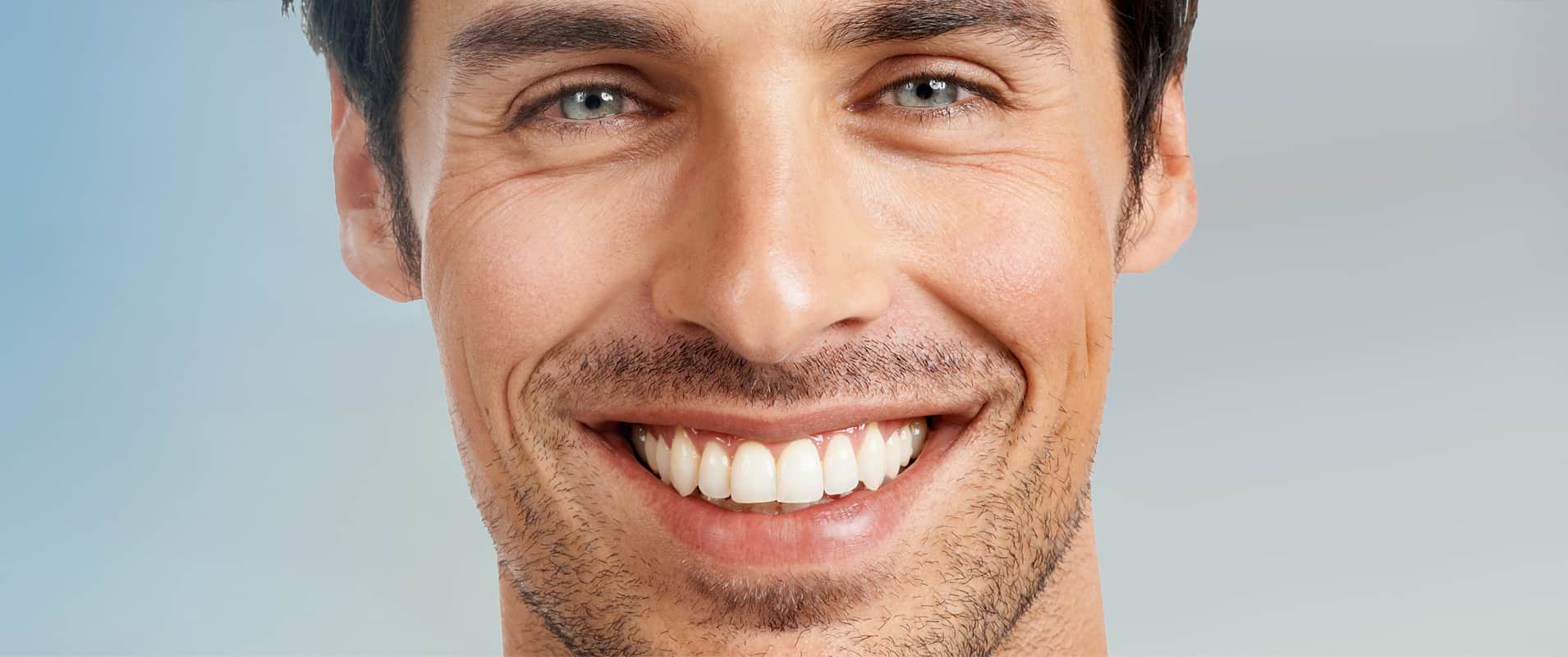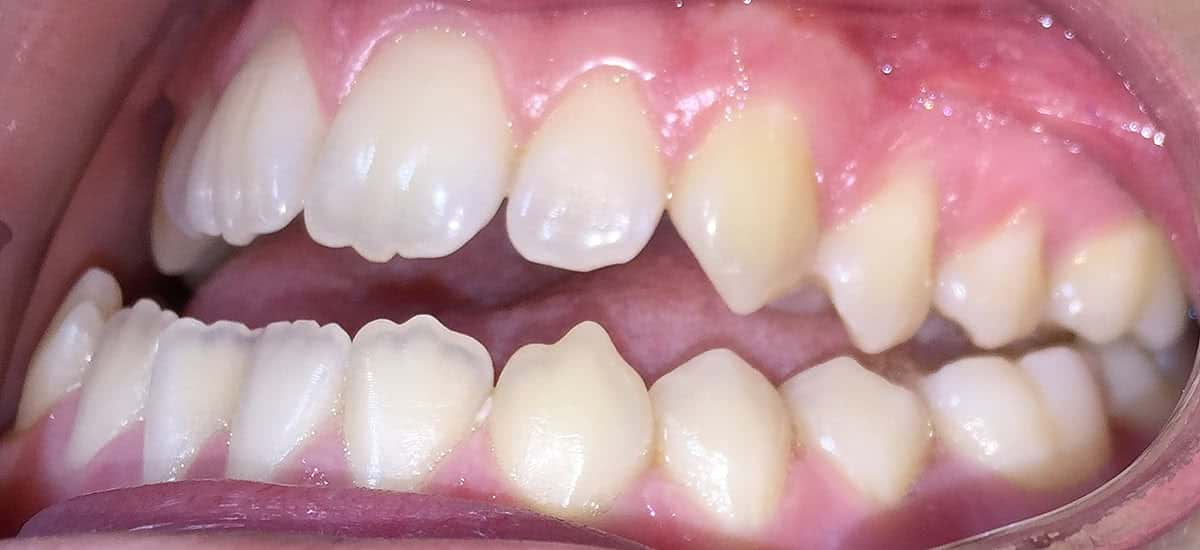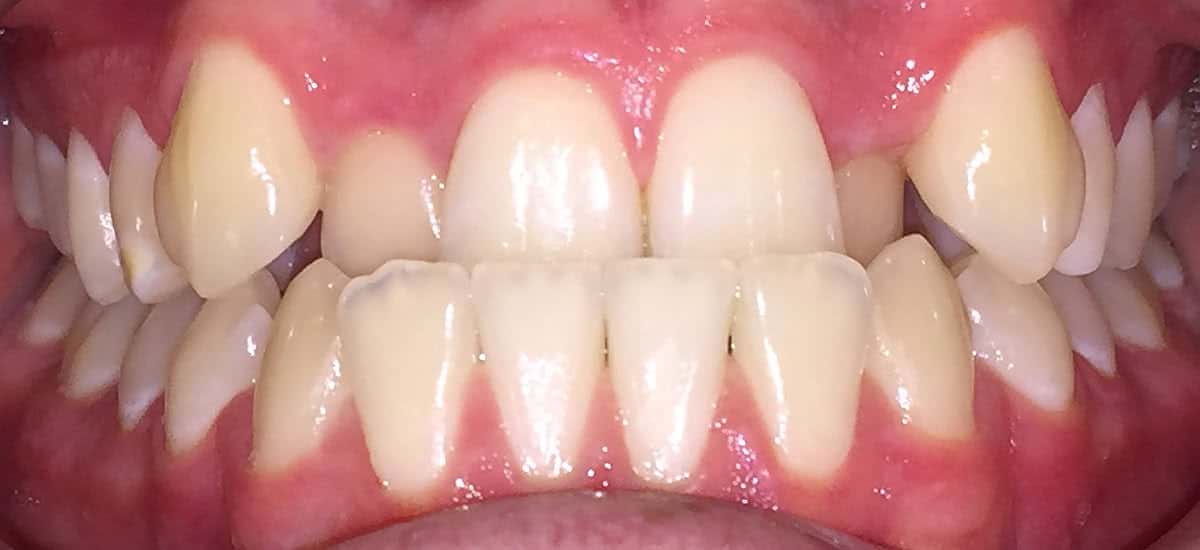Introduction
Underbite is where, when the jaw is closed, the front lower teeth and lower jaw sit in front of the upper teeth. It is the opposite of deep bite and affects between one in ten and one in twenty people. An underbite is often more noticeable than a deep bite, as the normal resting position of the front teeth is in front of the lower front teeth, and so people with an underbite can become quite self-conscious.
Occasionally underbite is also referred to as 'mandibular prognathism' or 'reverse overjet'.
Causes
The most common cause of underbite is genetic, that is an inherited shape of the bone structure in the skull and the mouth. Other factors may also play a role, for example…
- Breathing through the mouth.
- Thumb sucking.
- Extended bottle feeding / dummy use.
- 'Tongue thrust' – this is where the tongue protrudes over the lower teeth, often when swallowing or talking.
- Pencil chewing.
- Nail biting.
Some medical devices, for example the mouthpiece for a CPAP machine used by sufferers of sleep apnoea, may also cause, or worsen, an underbite.
If left untreated, underbite can cause the following problems…
- Difficulty speaking and pronouncing certain letters, especially 'F' and 'S' sounds.
- Difficulty chewing (and an increased risk of choking as food cannot be properly chewed before swallowing).
- TMD (also referred to as 'TMJ') – Temporo-Mandibular Joint Disorder, where there is jaw joint pain, which can also cause headaches, and, in the longer term, wearing of the teeth and gum disease.
- Smile appearance and general appearance of the face, which can in turn cause self-esteem issues, particularly in children.
Treatment
As with most orthodontic treatment, the earlier underbite can be treated the better - ideally before adult teeth appear. With children aged under 8, a number of options are available to help correct an underbite, for example devices which help jaw development, such as upper jaw expanders (also called 'palatal expanders'), chin caps (which are also suitable for teenagers) and reverse pull face masks. Where an underbite is mild, ordinary braces may be recommended, or tooth veneers.
If the underbite is severe, or where correction is required in adulthood, orthagnathic surgery may be recommended to align the upper and lower jaws.






